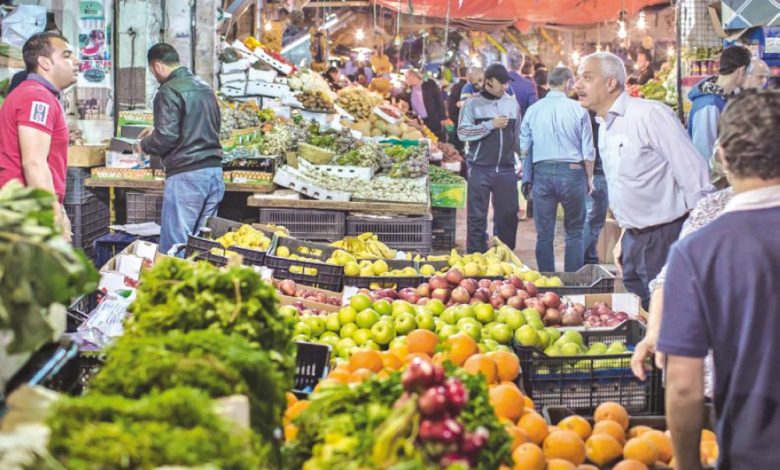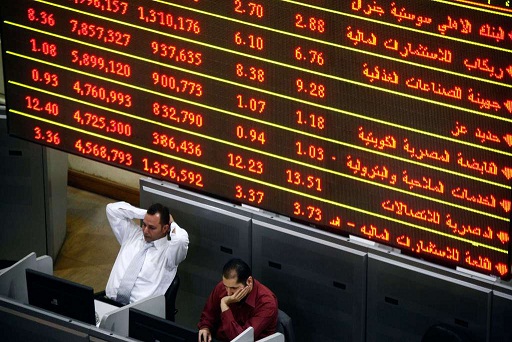Egypt’s annual urban inflation rate eased to 13.9% in July, down from 14.9% in June, reflecting a modest improvement in the country’s inflationary pressures. The monthly inflation rate also showed a larger decline, recording -0.6% in July compared to -0.1% in June, suggesting a more substantial drop in prices.
In a statement released on Sunday, the Central Agency for Public Mobilisation and Statistics (CAPMAS) reported that the Consumer Price Index (CPI) nationwide reached 256.5 points in July, marking a 0.6% decrease from June. CAPMAS attributed the decline primarily to a significant drop in the prices of food items. Specifically, meat and poultry prices fell by 4.9%, fruit prices decreased by 11%, and vegetable prices saw a 7% reduction. Additionally, personal effects prices declined by 0.5%.
On the other hand, several goods experienced price increases. The cost of cereals and bread rose by 0.4%, while fish and seafood saw a 0.2% increase. Dairy products, including cheese and eggs, also went up by 0.2%, as did oils and fats, which increased by 0.1%. Prices for sugar and sugary foods, coffee, tea, and cocoa each rose by 0.2%. Mineral and sparkling water, as well as natural juices, saw a more significant price increase of 0.8%, while alcoholic beverages experienced a sharp rise of 5.3%. Tobacco prices surged by 7.8%, marking one of the most notable hikes.
In terms of non-food items, fabric prices increased by 0.4%, ready-made garments by 0.3%, and footwear by 0.2%. The cost of housing-related expenses also rose, with actual rent increasing by 0.8% and maintenance and repair costs for dwellings climbing by 1.7%. Meanwhile, household goods such as furnishings, appliances, and tableware saw notable increases. Household furnishings went up by 2.6%, and household appliances rose by 0.6%. Other household goods, including glassware, tableware, and utensils, saw a 1.2% rise, while tools and equipment for house and garden also increased by 1.2%.
Service-related prices also saw upticks, with outpatient services rising by 0.8% and hospital services increasing by 1.1%. Transportation costs also climbed, with private transport spending rising by 0.3%. The prices of telephone and fax equipment rose by 0.5%, while costs for audio-visual, photographic, and information processing equipment increased by 0.6%. Services in cultural and recreational sectors rose by 0.1%, and ready-made meals went up by 0.6%. Hotel services saw a substantial increase of 1.5%, while personal care services rose by 1.2%.
On a national scale, annual inflation stood at 13.1% in July, down from 14.4% in June. The Central Bank of Egypt (CBE) projected that inflation would remain stable at current levels for the remainder of 2025, with a gradual decline expected through 2026. The CBE anticipates inflation will eventually reach its target of 7% ± 2% by the fourth quarter of 2026.
In addition to the national CPI figures, monthly core CPI inflation, computed by the Central Bank of Egypt, recorded -0.3% in July 2025, compared to -0.5% in July 2024 and -0.2% in June 2025. On an annual basis, core CPI inflation stood at 11.6% in July 2025, up slightly from 11.4% in June 2025.
In its Q2 2025 Monetary Policy Report, the CBE revised its inflation forecast slightly, now expecting 15–16% inflation in 2025 and 11–12% in 2026. This represents a notable improvement from 28.3% in 2024. However, the CBE acknowledged that the inflation outlook remains subject to several risks. These include the slower adjustment of service and consumer goods prices and the potential impact of fiscal consolidation measures on domestic prices.
The CBE further explained that since 2017, it has been transitioning to a flexible inflation-targeting framework. This approach has allowed the central bank to anchor inflation expectations, control demand-driven pressures, and mitigate the effects of supply shocks. In December 2024, the CBE set inflation targets for Q4 2026 and Q4 2028 at 7% ± 2% and 5% ± 2%, respectively.
The Monetary Policy Committee of the CBE, which meets eight times a year, is responsible for steering the country’s inflation strategy. After each meeting, the committee sets interest rates and issues a statement explaining its decisions. The central bank uses a range of tools, including overnight deposit and lending facilities, reserve requirements, and deposit auctions, to maintain price stability and mitigate inflation volatility.




